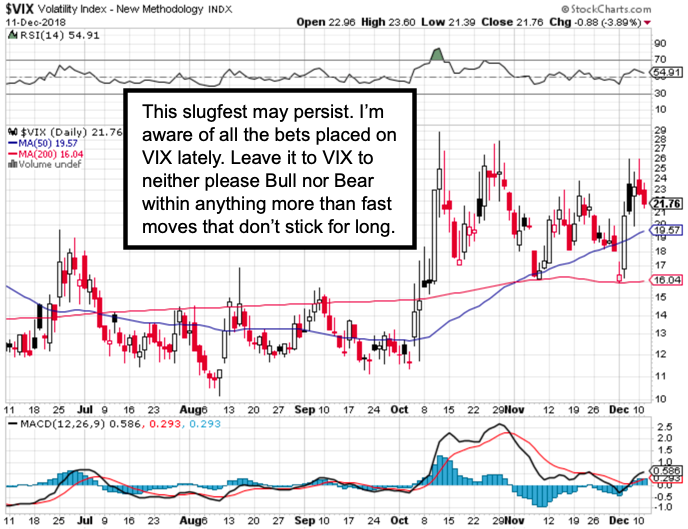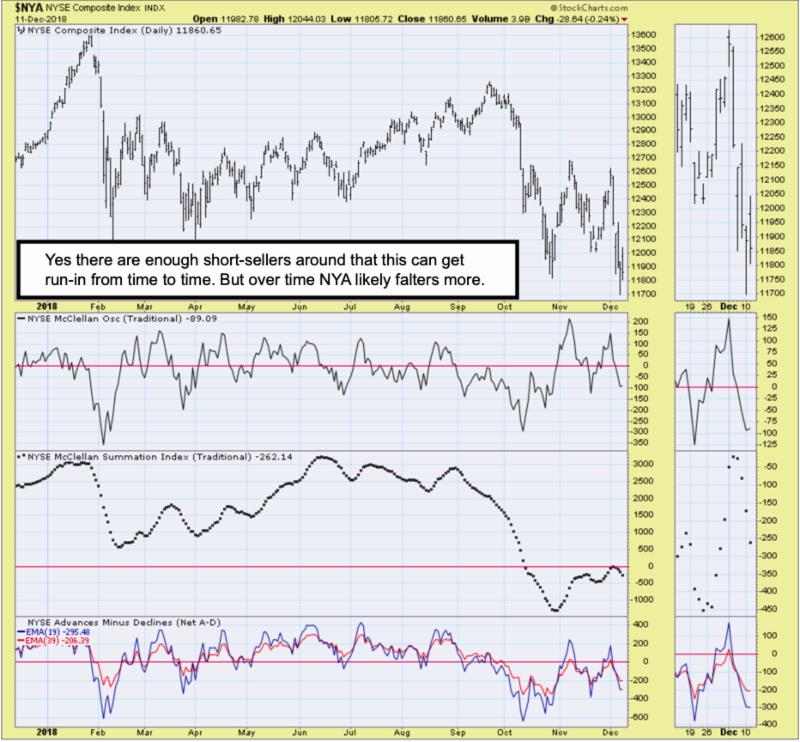Whew, these markets are swift, illiquid and sensitive. They are also continuing to function in a defensive way that can ultimately result in lower levels, regardless of short-squeezes that intervene when traders are too heavily vested on the downside, writes Gene Inger.
**
What China is trying to do on a macro basis in technology sort of shuttles the tariff battles to the sidelines slightly, when you consider this is really about China’s quest, as they readily acknowledge with their 2025 Initiative, to become a leader in technology.
To achieve that they require semiconductor equipment gear to make the wafers (chips and processors) upon which new tech relies.
Reuters: Wall Street pushes higher Wednesday on trade talk optimism.
**
Daily action features chaotic spasms of this S&P (SPX) market were not only anticipated before it cracked; but surely it reflects why I wanted investors not to get very caught-up in the nuances at the critical after-the-fact breakdown points.
Having sold on rallies all year and projected key breakdowns, there should really be little reason for any investor agreeing with our assessments to be terribly frazzled by the raging debates as to whether this market is now at a top or a bottom.
Hint: it’s neither; simply fiddling-around after breaking the recent lows. And if you did get a sharp rally from here it would not be sustainable.
**
Alternating spasms are engaging to observe, tricky to try trading and tend to be unsustainable in any direction. However, it’s not merely tussles like we saw at slightly higher levels; because it’s occurring in a lower range.
That is why the significance of not overcoming the recent lows reinforces a fairly clear image of S&P trying to rebound; but it is being deflected at resistance levels that are crucial even if we’re to look for any meaningful seasonal lift.
**
Of course, the headline sensitivity came into play readily Tuesday; first as a series of tweets suggested the Secretary of the Treasury Steven Mnuchin as maybe Robert Lighthizer as well had satisfactory talks with China’s vice premier. Then the president tweeted about a coming removal of auto tariffs, which is what of course they presumably agreed to in Argentina, but again let’s see it occur.
Reuters: China makes first major buy of U.S. soybeans Wednesday since Trump, Xi meet.
**
That series of morning remarks may or may not be real news. Whether intended (probably) or not to set-up a stock market rebound; they did. So, we got the expected limited follow-through which ran into nominal resistance at around 2670. It never got near the higher 2700 level at this point, and we didn’t think it would). Then the next news-cycle arrived.
That was not the (unprecedented) verbal squabble in the Oval Office but a Washington Post story suggesting injunctions against Chinese individuals in relation to Intellectual Property theft. That derailed the already defensive or ebbing favorable tone and resumed fast-markets to the downside.

Otherwise lots of evidence (and incredible backdrop tensions) remain, suggesting nothing is yet-looming in terms of a sustainable upward move. Perhaps Oils; and a short-squeeze if auto tariffs indeed get cut (in reality; not by mere tweets that find contradictory tweets from other officials within hours or less).
**
All of the news-cycle stuff would be hard to believe if it weren’t happening in real life and in real time during the market. (Today’s tweets to support stocks it seems; then the Washington Post Chinese story; and then the incredible spectacle in the Oval Office, which later was followed by Nancy Pelosi at the tail-end of a response to a reporter, adding a question about the manhood of this president). So much for decorum between the likely new Speaker of the House, and the sitting president of the United States.
**
Technically, when you look at a monthly chart; the whole year looks very like a distributional pattern that tried to sustain a visibly constructive pattern.

**
That’s especially true for the S&P (500), but also for the DJIA (DJIA). Both NASDAQ (NDX) and the New York Composite have revealed a better picture of market internals for many months. Indicators like Advance/Decline Lines and so on affirm my view that the internal high of the market was in late January, with retests on a secondary basis periodically as the year evolved.
This is especially meaningful if we break hard from this area (whether now, or as would seasonally be more likely, some weeks forward). Timing it has a challenge; the sniff test.
This market (and stabilization efforts) has a sort of canine aroma.
**
I am aware of various technical perspectives about money flow. (Some say that’s bullish, but generally it is not.) Or that now one should be long S&P 500 CBOE Volatility Index (VIX) via iPath S&P 500 VIX ST Futures ETN (VXX) This is usually not the way to play because of time degradation, while the idea of playing VIX with options usually makes money for the sellers/writers, not the buyers, except when the actual break--or sharp rally--is nailed right.





















